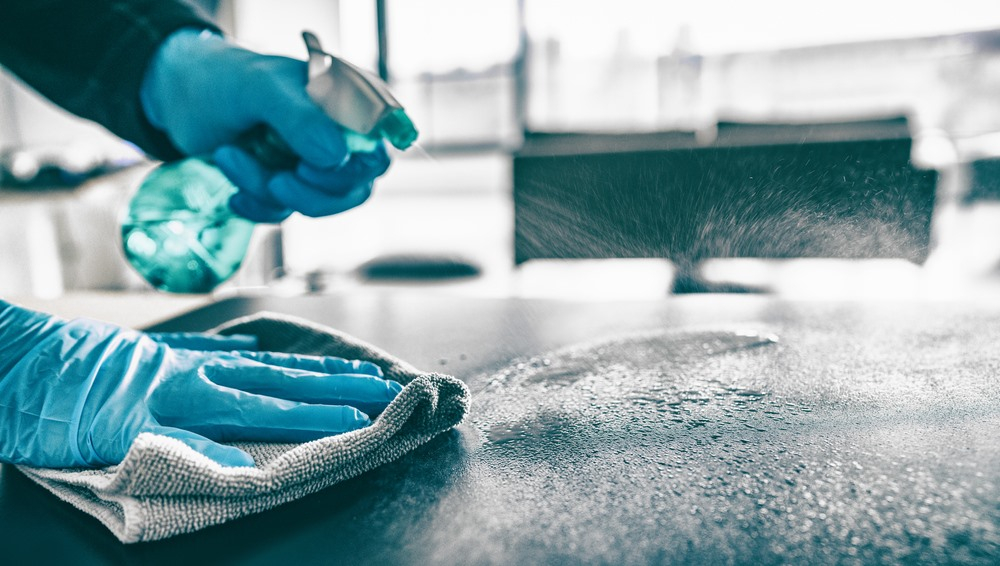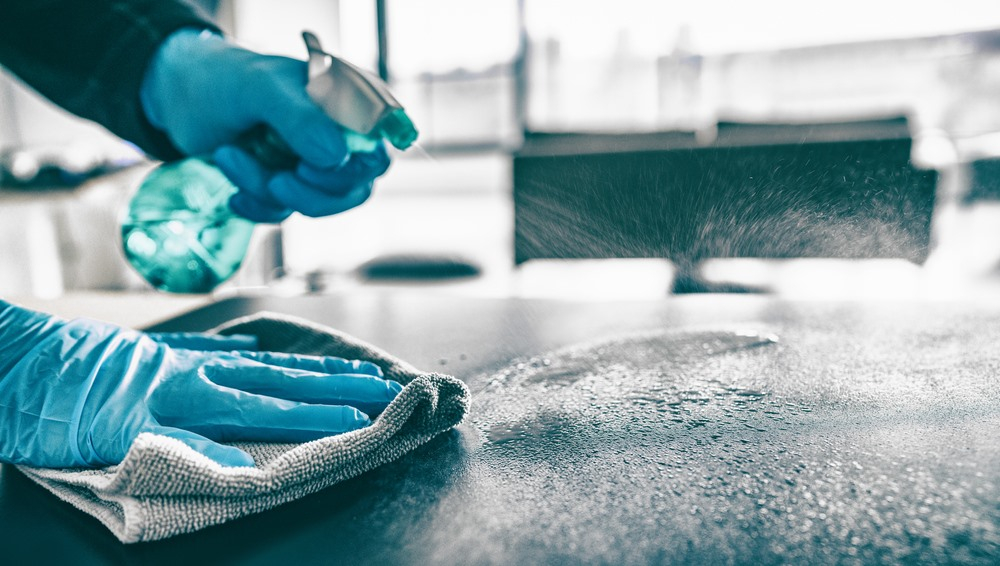Cleaning, sanitization or sanitation – since last few months, we have been using these words so many times. Amid the outbreak of novel coronavirus, these are the only factors which can keep us and our surrounding clean and can help us to fight against the virus.
But there is a problem. Though we use words like cleaning, sanitation or sanitization quite frequently, we sometimes do pay attention toward the meaning of those words on an individual note. In this blog, we are going to talk about cleaning, sanitization and sanitation and how they are different from each other.

Cleaning
We all are familiar with the word ‘cleaning’. It is a process of removing unwanted substances such as dirt, impurities and other infectious agents from certain objects or environment. Cleaning occurs in myriad commercial, personal, domestic and environmental contexts, which differ in scale as per requirements.
Cleaning is the fundamental step, like wiping down a surface with soap and water or using a vacuum cleaner. It removes visible dirt, dust, and debris, but it doesn’t necessarily eliminate germs or bacteria.
Sanitization
While cleaning is all about removing the dirt and impurities, sanitization is all about killing and eradicating the bacteria, germs, pathogenic, and non-pathogenic microorganisms that grow on various surface tops. It is a process of cleaning certain areas or surface to make it bacteria-free and clean all types of microbes and viruses that can infect the human body and can become the cause of different diseases.
Sanitization goes a step further by reducing the number of germs and bacteria on surfaces to a safe level. This is typically done with disinfectants or sanitizers, which can be chemical or non-chemical. Sanitization is essential in areas like food preparation surfaces, bathrooms, and healthcare settings.
Sanitation
Sanitation is meant to protect human health by providing a clean environment which can stop the transmission of diseases. Though primarily sanitation talks about providing bacteria and disease-free surrounding, sanitation has multiple other meanings. Therefore WHO has come up with a comprehensive definition of sanitation. According to the World Health Organisation (WHO),
“Sanitation generally refers to the provision of facilities and services for the safe disposal of human urine and feces. The word ‘sanitation’ also refers to the maintenance of hygienic conditions, through services such as garbage collection and wastewater disposal.”
Sanitation, on a broader level, refers to the overall practices and procedures employed to maintain a clean and hygienic environment. This encompasses cleaning, sanitization, proper waste disposal, and ensuring access to clean water and sanitation facilities. It’s a comprehensive approach to preventing the spread of diseases and promoting good health. While cleaning is all about ensuring the primary process of removal of dirt, dust etc, sanitization is mostly about disinfecting the germs and bacteria. However, sanitation includes complete cleanliness which includes cleaning dirt and removal of germs and bacterias to keep the surrounding clean. During this COVID cleaning, sanitization and sanitation play a very important role to keep us safe and depending on these measures, our nation has started with its gradual unlock process.
Popular Searches:
Office Sanitization | Difference Between Cleaning and Sanitizing | Sanitizing Schools | Importance of Sanitation and Hygiene | Difference Between Disinfection and Sanitization | Professional Sanitization | Importance of Sanitization | Sanitization Checklist for Schools | Herbal Sanitization




